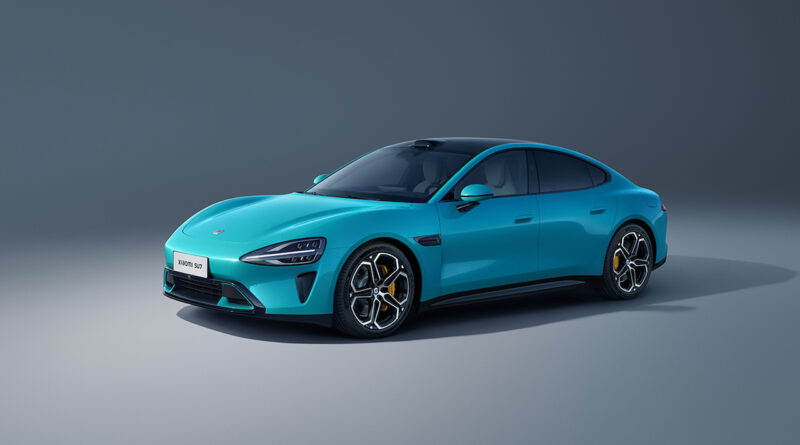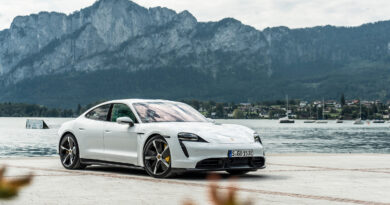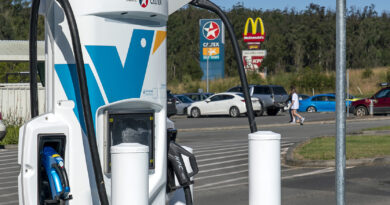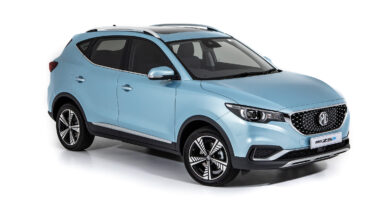New Chinese Xiaomi SU7 EV wants to humiliate Porsche Taycan with its speed and 1200km range
Chinese electronics giant, Xiaomi, has unwrapped its first-ever production car, the Xiaomi SU7 sedan and the omens are not good for its closest rival, the Porsche Taycan.
Arriving in 2024 just two years after Xiaomi announced it was going into the car-making business, the SU7 is the result of a 10 billion Chinese yuan ($2 billion) investment and the work of more than 3400 engineers.
With another 70 billion Chinese yuan ($14.1 billion) committed over the next ten years, it’s fair to say the Xiaomi SU7 isn’t a toe-dipping exercise and is more of the shape of things to come from the world’s second biggest smartphone maker.
In fact, according to Xiaomi’s CEO Lei Jun, the fledgling EV car-maker aspires to be one of the world’s top five car-makers in as little as 15 years.
Underpinning its dreams is the all-new Modena vehicle architecture that has been created from scratch for the Xiaomi SU7 and the SUV that will follow.
Capable of supporting both 400-volt and 800-volt electrical architectures, as well as single and dual motors the entire Xiaomi SU7 was developed in-house so the learning acquired could be reapplied in the future.

Borrowing plenty from the front-end design of the McLaren 720S, the SU7 was styled by head of design Sawyer Li who penned both the iX and Circular Vision Concept while working for BMW.
Measuring 4997mm long, 1973mm wide and standing 1440mm tall the new fast SU7 is 34mm longer, 3mm narrower and rides 44mm higher than the Taycan but packages a wheelbase that’s 3000mm long – 100mm more than the Porsche for much more passenger space.
Sharing its ultra-sleek lines with the British supercar has also resulted in some of the best aerodynamics in the business with a drag co-efficient of just 0.195Cd – less than the Lucid Air (0.197Cd) and Mercedes EQS (0.20Cd).
Claimed to be built using a highly rigid body, the Xiaomi gets the car-maker’s own in-house motors that are named after a combustion engine arrangement.
The entry ‘V6’ single motor is claimed to produce 220kW and 400Nm of torque and designed for the SU7 with the 400-volt electric architecture, which should lower the cost for the entry variant.
The mid-spec V6S comes with more power (275kW) and torque (500Nm) and works with the more advanced 800-volt electric architecture that will allow ultra-fast charging speeds.
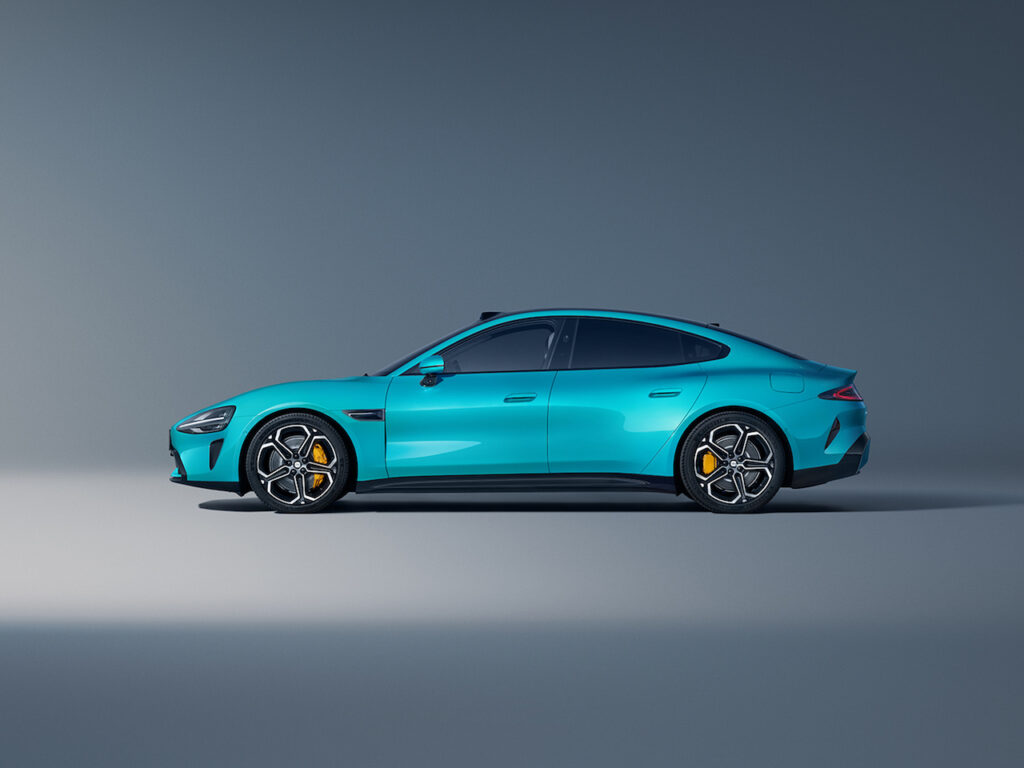
Both the V6 and V6S e-motors have been designed to spin up to 21,000rpm.
The dual-motor SU7 uses a combination of the V6 and V6S motors for a total output of 495kW. Performance of the flagship SU7 is impressive with 0-100km/h taking just 2.78 seconds – 0.02sec quicker than a 560kW Porsche Taycan Turbo S.
The SU7 Dual-Motor also gets an 875-volt charging system for some of the fastest charges in the business, although the Chinese start-up has yet to release charging times.
Later on in 2025, Xiaomi will launch its halo HyperEngine which, amusingly, has been dubbed the V8S.
Claimed to produce an incredible 500kW and 635Nm, Xiaomi also says it has a maximum efficiency output of 98.1 per cent.
Designed to work with the 800-volt architecture Xiaomi said the most powerful V8S can spin up to 27,200rpm – far higher than its rivals. That should allow not only higher levels of efficiency but ensure future models won’t need a range-sapping two-speed transmission.
The highest-revving electric motor that powers the Tesla Model S Plaid can only spin up to 23,308rpm, at which point the supercar-fast sedan is travelling at 322km/h.
Perhaps more impressive, Xiaomi says it has a prototype motor that has already achieved 35,000rpm in testing, paving the way for even higher output electric motors that will sit above the V8S.
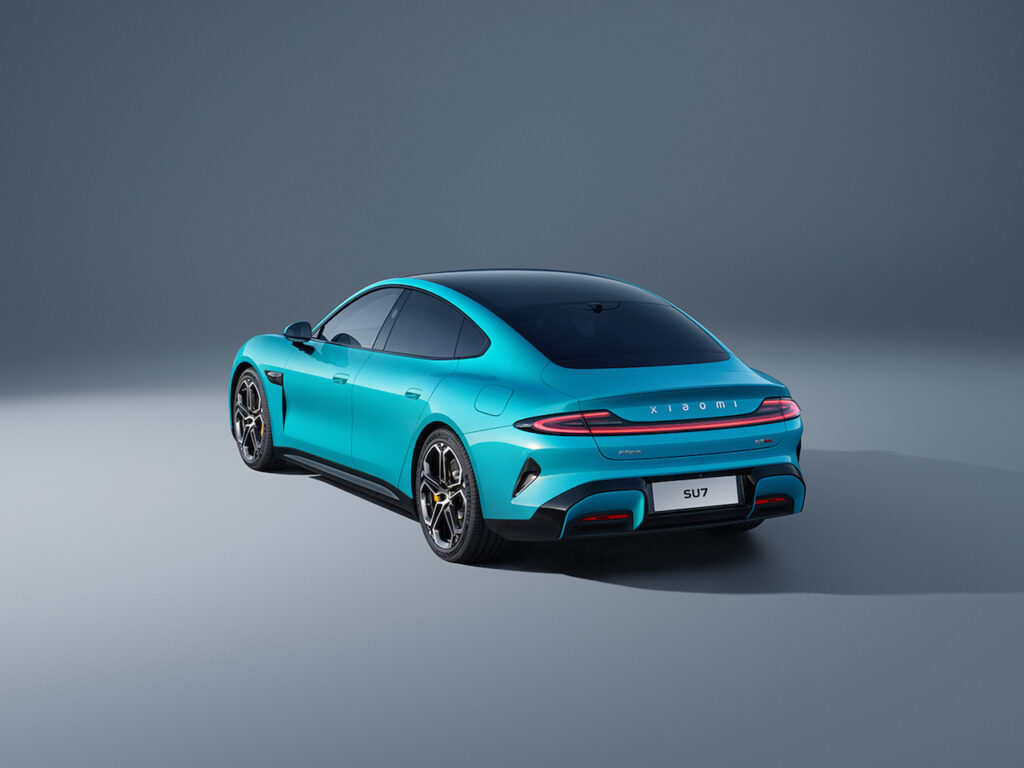
From launch the Xiaomi will come with a large 101kWh lithium-ion battery that will provide for a range of 800km.
Mounted using a lightweight cell-to-body construction, the Chinese car-maker says the power pack is covered by 14 layers of protection.
Better still, a short five-minute top-up can add as much as 220km. After 15 minutes more than 510km of range has been added.
If that’s not enough, a larger-still 132kWh will be available that covers 1000km on the Chinese test cycle (CLTC).
Later on, an ultra-long-range version will rock up with a huge 150kWh battery that will be able to travel as far as 1200km before you need to stop for a charge.
Announcing that pilot production of SU7 has already begun at a new factory in Beijing, Xiaomi has not yet confirmed how quickly is plans to expand its operations. But it’s thought it will offer its SU7 in regions like Europe as soon as 2025.
Already an expert in direct sales, Xiaomi is said to have a 12 per cent global share of the smartphone market and owns a major slice of the consumer electronics market in China. If it enters Europe and, eventually, Australia, the brand will likely follow the Tesla model of marketing cars directly via online sales portals, with the brand owning both the distribution and service centres.

